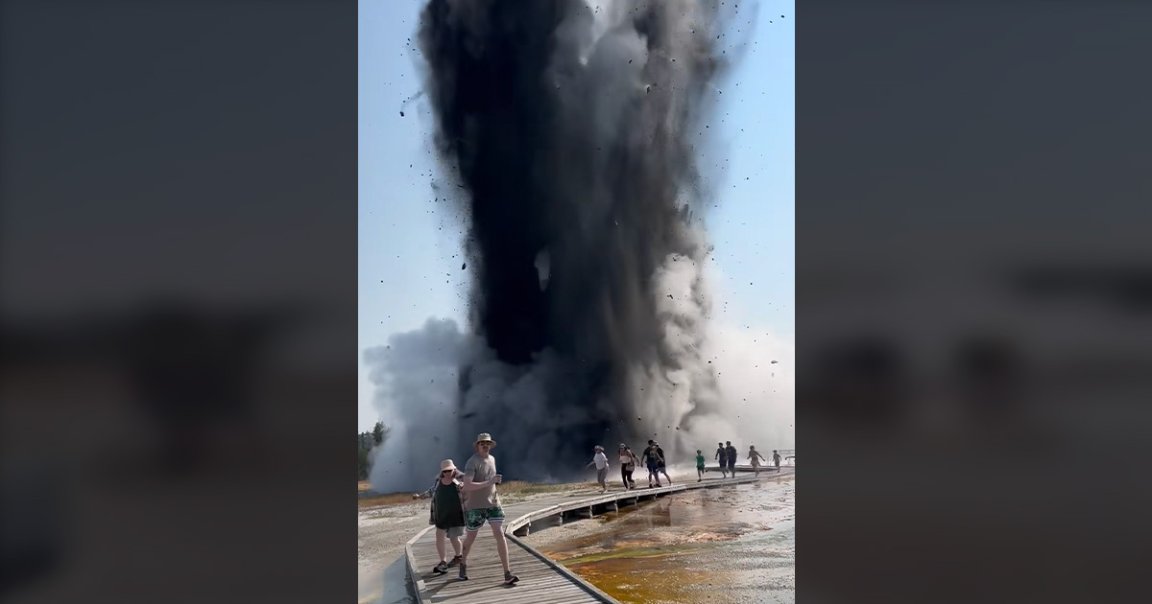
Big Nothing
A hydrothermal explosion rocked the Biscuit Basin area of Yellowstone National Park on Tuesday morning, sending tourists scrambling to safety as boiling water, rocks, and heaps of mud went flying into the air amidst a huge plume of steam.
Park officials say that no injuries have been reported. But for safety reasons, the Biscuit Basin, including the parking lot and boardwalks, are temporarily closed. Photos of the aftermath shared by the National Park Service shows some damage to the boardwalk close to the site of the explosion, which took place near Sapphire Pool, not far from the iconic Old Faithful geyser.
These may not be the rumblings you want to hear from the place home to an apocalyptic supervolcano capable of smothering the continent, but don’t worry: officials say this isn’t a sign of the big one.
“No other monitoring data show changes in the Yellowstone region,” the park service said in a statement. “Today’s explosion does not reflect a change in the volcanic system, which remains at normal background levels of activity.”
Pressure Cooker
Hydrothermal explosions aren’t uncommon in Yellowstone, and typically occur once or twice per year. It’s not everyday you get such spectacular footage of one, though, and videos show just how puny the tourists look next to the dark, towering plume of the eruption.
It’s big — but compared to some of the other hydrothermal explosions that have taken place in the past, it’s not massive.
According to the US Geological Survey, these sudden eruptions of pressurized, superheated water can sometimes reach over a mile in height, and leave behind craters equal in diameter. The largest hydrothermal crater we know of is around 1.5 miles across, formed 13,800 years ago.
Many hydrothermal explosions can be as small as a few dozen feet, however, and large ones only occur every 700 years on average.
No one’s known to have ever been killed by one of these events, but their volatility does pose a unique hazard. “Hydrothermal explosions, being episodes of water suddenly flashing to steam, are notoriously hard to predict,” the USGS said on X, formerly Twitter. “They may not give warning signs at all.”
Keeping Watch
Fortunately, though, volcanoes do give warnings.
Scientists look for a number of precursors that foretell a magmatic eruption, like an uptick in the frequency and intensity of earthquakes. We might also expect to see more activity in nearby volcanic vents called fumaroles.
As it stands, none of these have cropped up.
“Hydrothermal explosions like that of today are not a sign of impending volcanic eruptions, and they are not caused by magma rising towards the surface,” Michael Poland, scientist-in-charge at the Yellowstone Volcano Observatory, said in a statement.
More on geology: Angry Volcano in Iceland Just Threw Up an Apocalyptic 150-Foot Tidal Wave of Molten Lava